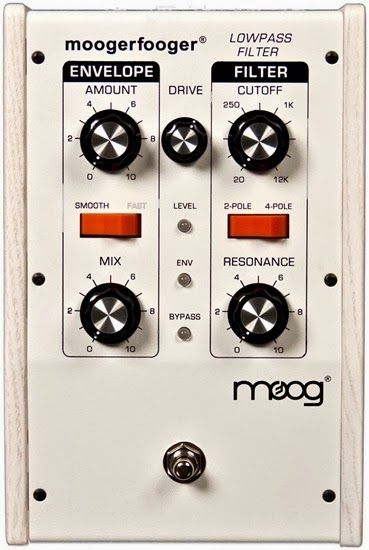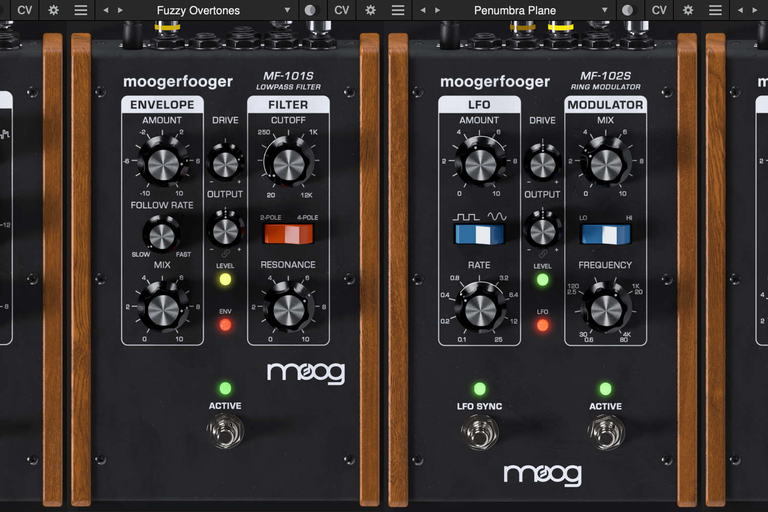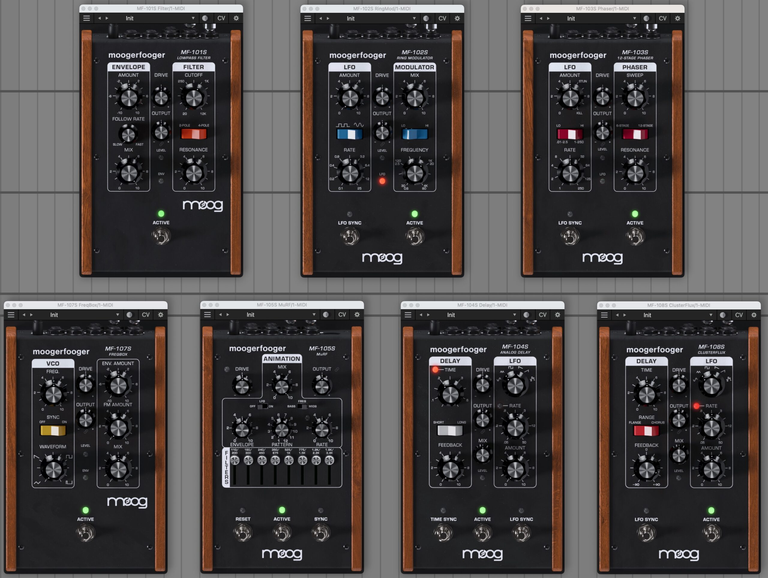
Single Delay y Filtro Peine, base de varios efectos de audio.
1. Retardo simple / Single Delay.
Single delay es la base de varios efectos de audio. El Delay puede ser percibido en espacios acústicos como la reflexión de una onda sonora que se sobre pone sobre el sonido de la fuente. La distancia con la fuente determina el retardo de cada onda reflejada.
El resultado de la suma de la señal original con la reflejada hace que el efecto sea audible. Los parámetros manipulables para este efecto son:
T: Tiempo del retardo.
g: La amplitud de la señal retardada.
Los Efectos basados en retardos se pueden dividir en dos:
Single Delay.
Delay Modulation.
Slapback Delay
Vibrato
Echo
Flanger
Multi-Tap Delay
Chorus
Hay dos representaciones para el delay y para mejor compresión de estos en su implementación digital es necesario conocer el filtro peine.
Single Delay y filtro Peine
Single Delay and Comb Filter, the basis of several audio effects.
Single delay is the basis of several audio effects. Delay can be perceived in acoustic spaces as the reflection of a sound wave that is superimposed on the sound of the source. The distance from the source determines the delay of each reflected wave.
The result of the sum of the original signal with the reflected signal makes the effect audible. The manipulable parameters for this effect are:
T: Time of the delay.
g: The amplitude of the delayed signal.
Delay-based effects can be divided into two:
Single Delay.
Delay Modulation.
Slapback Delay
Vibrato
Echo
Flanger
Multi-Tap Delay
Chorus
There are two representations for the delay and for better compression of these in its digital implementation it is necessary to know the comb filter.
Single Delay and Comb filter
2. Filtro Peine. / Comb filter.

El Filtro Peine funciona sumando una señal retardada a la señal original, creando interferencia constructiva o destructiva. Este se presenta por ejemplo cuando dos parlantes reproducen la misma señal a distancias diferentes el oyente. Dada la longitud de onda y la diferencia de distancias entre parlantes y oyente, la señal puede llegar con diferente fase presentando interferencia. Básicamente cuando el sonido indirecto tomo un camino más largo que el directo, se presenta un filtro peine cuando ambos sonidos se combinan.
Existen dos configuraciones del filtro peine, de respuesta Finita (FIR) y de respuesta Infinita (IIR).
The Comb Filter works by adding a delayed signal to the original signal, creating constructive or destructive interference. This occurs for example when two speakers reproduce the same signal at different distances from the listener. Given the wavelength and the difference in distances between speakers and listener, the signal can arrive with different phase presenting interference. Basically, when the indirect sound takes a longer path than the direct sound, a comb filter is present when both sounds are combined.
There are two configurations of the comb filter, Finite Response (FIR) and Infinite Response (IIR).
2.1. Filtro Peine de Respuesta Finita (FIR) / Finite Response Comb Filter (FIR)
Este produce una serie finita de respuestas. Esto se da porque la señal va por un lazo directo por lo cual al detenerse las respuestas retardadas cesan.
Diagrama de Bloques Filtro Peine FIR
La ecuación diferencial y la función de transferencia:
y(n) = x(n) + g*x(n-m)
m=t/fs : fs es la frecuencia de muestreo
H(z) = 1+g*Z^-m = (Z^m + g)/Z^m
Analizando la respuesta en frecuencia de la figura 1 . se puede ver que para valores positivos de g el filtro amplifica las frecuencias pares múltiplos de 1/t y atenúa las impares.
También se aprecia que la magnitud permanece entre 20Log10(1+g) y 20Log10(1-g) . Por la serie de picos y similitud con un peine es que recibe su nombre.
La distribución de las raíces y los zeros se pueden ver en la siguiente figura donde el patrón de distribución es equivalente en cada plano.
Diagrama de polos y zeros, Filtro Peine FIR.
This produces a finite series of responses. This is because the signal goes through a direct loop so when it stops the delayed responses cease.
FIR Comb Filter Block Diagram
The differential equation and the transfer function:
y(n) = x(n) + g*x(n-m)
m=t/fs : fs is the sampling frequency
H(z) = 1+g*Z^-m = (Z^m + g)/Z^m
Analyzing the frequency response of figure 1 . it can be seen that for positive values of g the filter amplifies the even frequencies multiples of 1/t and attenuates the odd ones.
It can also be seen that the magnitude remains between 20Log10(1+g) and 20Log10(1-g) . It is because of the series of peaks and similarity to a comb that it receives its name.
The distribution of roots and zeros can be seen in the following figure where the distribution pattern is equivalent in each plane.
Pole and zeros diagram, FIR Comb Filter.
Filtro Peine de Respuesta Infinita (IIR) .

Este produce una serie inacabable de respuestas. Esto se debe a que la señal de entrada circula por un lazo de realimentación afectado por un Delay como se ve en la Figura 4. Cada ves que la señal atraviesa del delay es atenuada por g.
La ecuación diferencial y la función de transferencia:
y(n) = x(n) + g*y(n-m)
m = t/fs :fs es la frecuencia de muestreo
H(z) = 1/(1 – g*Z^-m) = Z^m/(Z^m – g)
Analizando la respuesta en frecuencia de la figura 4 . se aprecia que para valores positivos de g, el filtro atenua las frecuencias impares múltiplos de 1/t y amplifica las pares. También la magnitud se encuentra entre La amplitud de la señal resultante es gp donde p es el número de ciclos que la señal a cruzado por el delay. Es por esto que g debe ser menor que 1 ya que el sistema es inestable y cumpliendo con esta condición se mantiene estable.
La distribución de las raíces y los zeros se pueden ver en la siguiente figura muestra con claridad la inestabilidad del sistema. es por esto que |g|<1 para mantener la condición de estabilidad de otra forma la señal crecería sin fin.
Diagrama de polos y zeros, Filtro Peine IIR}
This produces an endless series of responses. This is because the input signal flows through a feedback loop affected by a Delay as seen in Figure 4. Each time the signal passes through the delay it is attenuated by g.
The differential equation and the transfer function:
y(n) = x(n) + g*y(n-m)
m = t/fs :fs is the sampling frequency
H(z) = 1/(1 - g*Z^-m) = Z^m/(Z^m - g)
Analyzing the frequency response of Figure 4 . it can be seen that for positive values of g, the filter attenuates the odd frequencies multiples of 1/t and amplifies the even ones. The amplitude of the resulting signal is gp where p is the number of cycles that the signal has crossed the delay. This is why g must be less than 1 since the system is unstable and meeting this condition keeps it stable.
The distribution of the roots and zeros can be seen in the following figure clearly shows the instability of the system. This is why |g|<1 to maintain the stability condition otherwise the signal would grow endlessly.
Pole-zero diagram, IIR Comb Filter}
Filtro Peine Universal / Universal Comb Filter
Dado que el oído percibe diferente el delay entre 50 a 100ms o más y entre 30ms o menos, diversas sensaciones pueden ser creadas jugando solo entre esos rangos es por esto que con una misma configuración de bloques se pueden crear los siguientes efectos.
Filtro Peine Universal con Delay variable
Como se puede ver en la Figura 7 este diagrama de bloques representa una configuración universal ya que cuenta con el lazo directo FIR y el lazo de retroalimentación IIR como también con un oscilador de baja frecuencia que permite variar el tiempo de retardo permitiendo crear diferentes efectos de acuerdo a los parámetros para cada uno.
Los parámetros manipulables son:
Gain: Ganancia directa señal original
FF-G: ganancia de lazo directo.
FB-G: ganancia de retroalimentación
A: Delay de Off-set, es el retardo sobre el cual se genera la oscilación.
Depth: amplitud del oscilador
Rate: Frecuencia del oscilador
Teniendo en cuenta lo anterior y asumiendo lo enunciado por el efecto Hass se plantean los siguientes efectos.
Diagrama de bloques Eco
Gain
FF G
FB G
Delay
Depth
Rate
Echo
1
0-1
0-1
100ms
0
0
Diagrama de bloques Vibrato
Gain
FF G
FB G
Delay
Depth
Rate
Vibrato
0
0-1
0
5-10ms
0-2.5ms
5-15Hz
Diagrama de bloques Flanger
Gain
FF G
FB G
Delay
Depth
Rate
Flanger
1
0-1
0-1
<15ms
0.3-14.7ms
0.5-5Hz
Diagrama de bloques Chorus
Gain
FF G
FB G
Delay
Depth
Rate
Chorus
1
0-1
0-1
20-30ms
0-5ms
0.2-2Hz
Since the ear perceives delay differently between 50 to 100ms or more and between 30ms or less, different sensations can be created by playing only between those ranges, so with the same block configuration the following effects can be created.
Universal Comb Filter with Variable Delay

As can be seen in Figure 7 this block diagram represents a universal configuration since it has the FIR direct loop and the IIR feedback loop as well as a low frequency oscillator that allows to vary the delay time allowing to create different effects according to the parameters for each one.
The manipulable parameters are:
Gain: direct gain original signal
FF-G: direct loop gain.
FB-G: feedback gain
A: Off-set delay, it is the delay over which the oscillation is generated.
Depth: oscillator amplitude
Rate: Oscillator frequency
Taking into account the above and assuming the Hass effect, the following effects are proposed.
Block diagram Echo
Gain
FF G
FB G
Delay
Depth
Rate
Echo
1
0-1
0-1
100ms
0
0
Block diagram Vibrato
Gain
FF G
FB G
Delay
Depth
Rate
Vibrato
0
0-1
0
5-10ms
0-2.5ms
5-15Hz
Flanger block diagram
Gain
FF G
FB G
Delay
Depth
Rate
Flanger
1
0-1
0-1
15ms
0.3-14.7ms
0.5-5Hz
Block diagram Chorus
Gain
FF G
FB G
Delay
Depth
Rate
Chorus
1
0-1
0-1
20-30ms
0-5ms
0.2-2Hz

- Sources/Fuentes:



| Blogs, Sitios Web y Redes Sociales / Blogs, Webs & Social Networks | Plataformas de Contenidos/ Contents Platforms |
|---|---|
| Mi Blog / My Blog | Los Apuntes de Tux |
| Mi Blog / My Blog | El Mundo de Ubuntu |
| Mi Blog / My Blog | Nel Regno di Linux |
| Mi Blog / My Blog | Linuxlandit & The Conqueror Worm |
| Mi Blog / My Blog | Pianeta Ubuntu |
| Mi Blog / My Blog | Re Ubuntu |
| Mi Blog / My Blog | Nel Regno di Ubuntu |
| Red Social Twitter / Twitter Social Network | @hugorep |

| Blurt Official | Blurt.one | BeBlurt | Blurt Buzz |
|---|---|---|---|
 |  |  |  |

 |  |  |  |
|---|

Upvoted. Thank You for sending some of your rewards to @null. Get more BLURT:
@ mariuszkarowski/how-to-get-automatic-upvote-from-my-accounts@ blurtbooster/blurt-booster-introduction-rules-and-guidelines-1699999662965@ nalexadre/blurt-nexus-creating-an-affiliate-account-1700008765859@ kryptodenno - win BLURT POWER delegationNote: This bot will not vote on AI-generated content
Telegram and Whatsapp